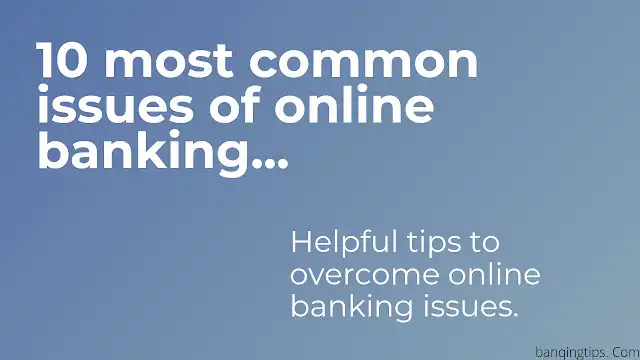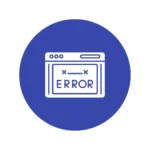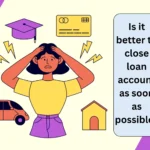Are you unable to transact funds online? Everytime you execute a payment request, your payment got failed with the reason “Please try after sometime” Or “server down”.
Or are you unable to access your banking app at all?
Trying to get it over with but system still throws multiple reasons for payment failure is sometimes quite discouraging.
It may be just a small issue which gets resolved on it own, or it can be a tough one that can’t really go away easily unless you get it fixed at your bank.
Small issues are okay as long as you know how to troubleshoot, there is no problem at all.
But the really tough one is something very excruciating. It would make you even stop using the online banking service for a while.
One such example is that suddenly your smartphone isn’t compatible with bank app due updates. Yesterday it was okay and this morning it isn’t with the reason incompatibility issues.
This sort of problem has no option but to change your smartphone to higher version operating system.
There are other issues that can even negatively impact one’s personal life. These come in the form of frauds and scams.
Issues related to technical glitches will always be there, even the most advanced technology has its flaws.
Today we are going to address some of the most common issues that online banking users usually face during the course of transaction.
We will dig into one-by-one and try to understand the root cause so that we are empowered to fix it as and when it occur.
Also, let’s understand how to prepare and safeguard ourselves against the financial frauds.
So, let’s find out the 10 most common issues and problems with using online banking.
1. Expired login password
This problem is quite common, and people used to face issues while resetting their ID for a new password.
To address the issue, either you have to visit the bank or try resetting the login password on your own.
The bank has given you the option to reset it at your convenience. Most of the time, the process of doing it is self-explanatory too.
Yes, at a certain time, you may be unable to reset the password. In that case, visit the bank and let the bank handle the task for you.
2. OTP does not deliver
A telecom network problem can sometimes make you sad and annoyed.
The irony is that it occurs when you need it the most. Why it happens and how to address the issue are completely different aspects.
Here’s why??
The non-receipt of OTP is mainly attributed to mobile network connectivity. If you are sure that your mobile number is properly fed into the account, it should not happen anyway.
Otherwise, there may be some other technical issue with the bank too.
For instance, recently there were software updates on the SBI internet banking platform called YONO.
The bank had announced the update related to SBI YONO as a SIM binding process, in which the bank funnels customer mobile numbers with active internet banking credentials.
While doing it, a lot of users had the issue of not getting the OTP required for fund transfers.
If your case is somewhat similar to this and it’s completely because of the bank’s internal issues, you might not be able to do much.
But to take advice from the bank official would be better.
Other than this, just by rebooting your phone, OTP might start flowing into your inbox.
Resend the OTP once or twice; if you are not getting it, better try after some time because requesting multiple OTPs would not fix the problem.
3. Account get debited but doesn’t reach there?
This is quite a frustrating one. When you make an online payment, the beneficiary is not getting the funds, although your account has been debited.
Now, the question is: how do I resolve the issue and get back my money?
There are a few scenarios here. It may be because of one of the reasons listed below.
- When you send money to the wrong account,. It means that when you type in the beneficiary account number, you might have made a mistake. This case normally happens in NEFT and RTGS.
- When you type in the beneficiary account wrongly, but that particular account exists in the name of another person,. In this case, serious issues might arise while getting back the funds.
- The third one is purely a bank internal issue, which normally gets refunded within a few days.
For NEFT/RTGS, the rejected fund gets back to the sender’s account on the same day. If not, you need to raise a complaint with your bank.
If the wrong account turns out to be an existing account of some other fellow, then get the help of your bank.
Between the same bank, this issue never happens, as the system would directly prompt you for an invalid account or so.
4. When an account gets debited twice.
The funny part is that it happens sometimes. It is seen that this type of issue happens while making payments of bills, challans, and others that are institutional types of payments.
If it occurs, you need to raise a complaint. To make a complaint, you have to go both online and offline. You can even raise a complaint via SMS or by calling the customer helpline.
The problem should resolve within a few days. Normally, banks take 5 to 7 days to settle the issue.
When the problem is related to a government-related account, it becomes tougher to get back your excess payment.
5. When your account is put on hold
Why has the bank put a hold on your account? There may be reasons for which you have no idea. This needs to be addressed sooner.
The bank never puts an account on hold unless they get specific direction from appellate authorities such as the RBI, the court, etc.
Another case might be if you are a loanee and your loan account has an overdue arrear, then the bank might put a hold on your account. It is known as marking a lien on the account.
There might be other reasons, too. If the bank suspects even a few transactions, they might put a hold on the account. The bank refers to this as the freezing of the account.
This exercise is done to protect against the wrongful use of an account by hackers and fraudsters. With just a clarification call to your bank, this issue will go away.
If it’s related to a higher appellate authority, such as the RBI, Income tax department or high court, things might be a bit tricky, and it has to be handled properly in time.
In the case of loan account lien marking, you need to pay up the overdue arrears, and only then will the account become okay.
Hold accounts would not work with online banking.
6. Fail to access when the system changed
These occur in applications based on online banking. We are talking about banks’ own mobile banking applications.
All the prominent banks in India, such as the State Bank of India, ICICI, HDFC, Axis, and other PSU banks, have their own internet banking app, which is available for both Android and iOS phones.
What happens is that when we switch to a new system or phone, it might not just work out. Not all, but a few people do face the issue.
The good thing is that troubleshooting is easy. Maybe while installing, if you give all the permissions the app requires, it normally works.
Sometimes, just rebooting the smartphone, might do the trick.
If not, there is a serious issue that needs to be attended to with the help of your bank.
7. Unable to access internet banking?
If you are unable to access internet banking because of bank website maintenance, there is nothing much you can do.
The bank normally tweets about its maintenance time on its official Twitter handle. Even on its official website, things normally get displayed.
Follow the instructions and plan accordingly.
If you are unable to access it because of an invalid username and password, you have to reset it if you can.
Otherwise, get the help of your bank.
8. OTP is going to the wrong mobile number
OTP is not delivered to your active mobile number, but it is forwarded to the previous number, which you do not use anymore.
Your bank account and internet banking platform need to be synced. You cannot do much, just tell your bank to fix the issue.
It might take a day or so. Instant fixing is possible, depending on your mobile number status.
If the previous number is still active and in use, you might be able to fix the issue right away with the help of your bank.
9. Falls into fraudsters’ trap
Financial loss due to compromising personal details is on the rise. During the pandemic, the number of online fraud cases increased exponentially.
To avoid fraudsters, the only thing that would protect you is what you do with your IDs and passwords used for financial transactions.
Fraudsters may call you, email you, SMS you, or even mail you by post to establish a connection with you.
Once it’s done, they may start extracting personal details such as account number, PAN number, CVV number, card number, etc., which are crucial for them.
If you compromise these details, they may succeed in doing what they intend to do.
To avoid such unwanted financial losses, stay away from these:
- Don’t reply to any suspicious SMS.
- Don’t click on any suspicious links.
- Don’t respond to any suspicious emails.
- If somebody asks for your personal details, please don’t share them at all.
- Spam calls? Just stay away!
What is recommended?
- Update the banking app whenever there is an update available.
- Change ATM and credit card PIN regularly.
- Change the Net Banking password every now and then.
- Make the password easy but hard to guess, but don’t keep the password that relates to your personal details, such as your name, date of birth, etc.
- For any update, you require. Do visit the bank.
10. The account got hacked
Getting your bank account hacked is very rare. But if it occurs, report it straight to the bank.
Do a FIR to your local police station if required.
The reason is not only for financial losses, the hacker might use your account for crime-related matters such as money laundering, financing terrorist activity, etc., which would give you the trouble of a lifetime that can be unsettling.







